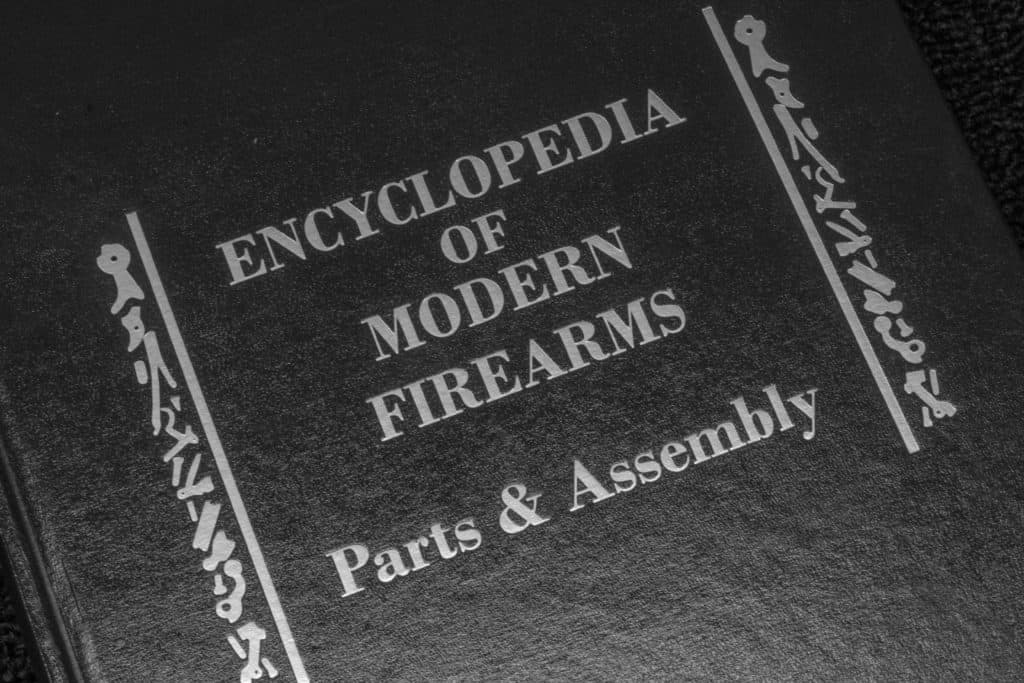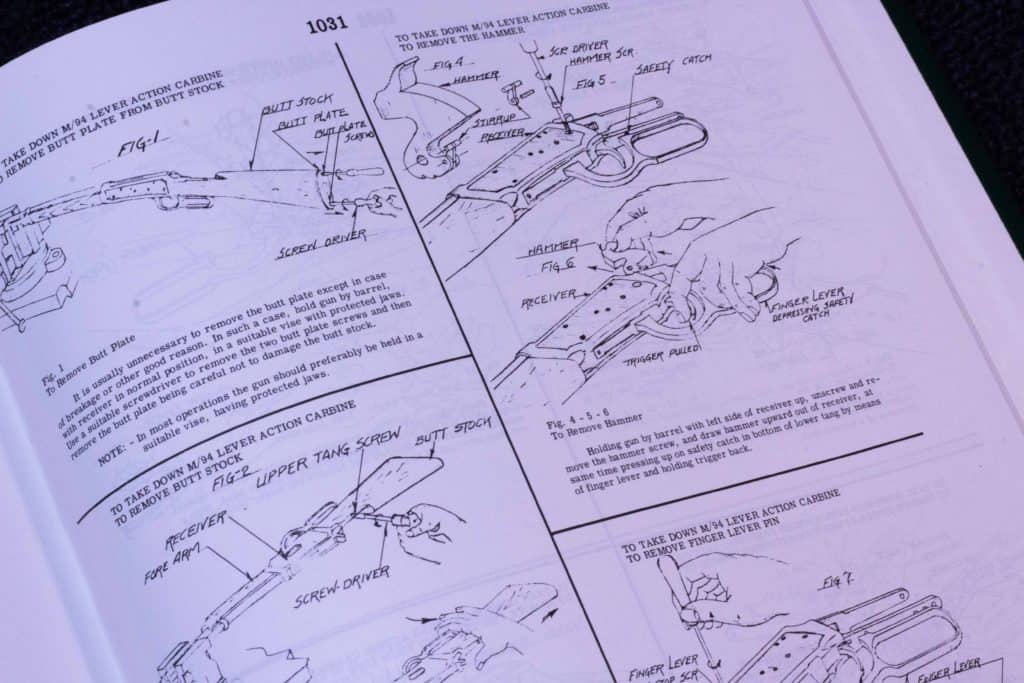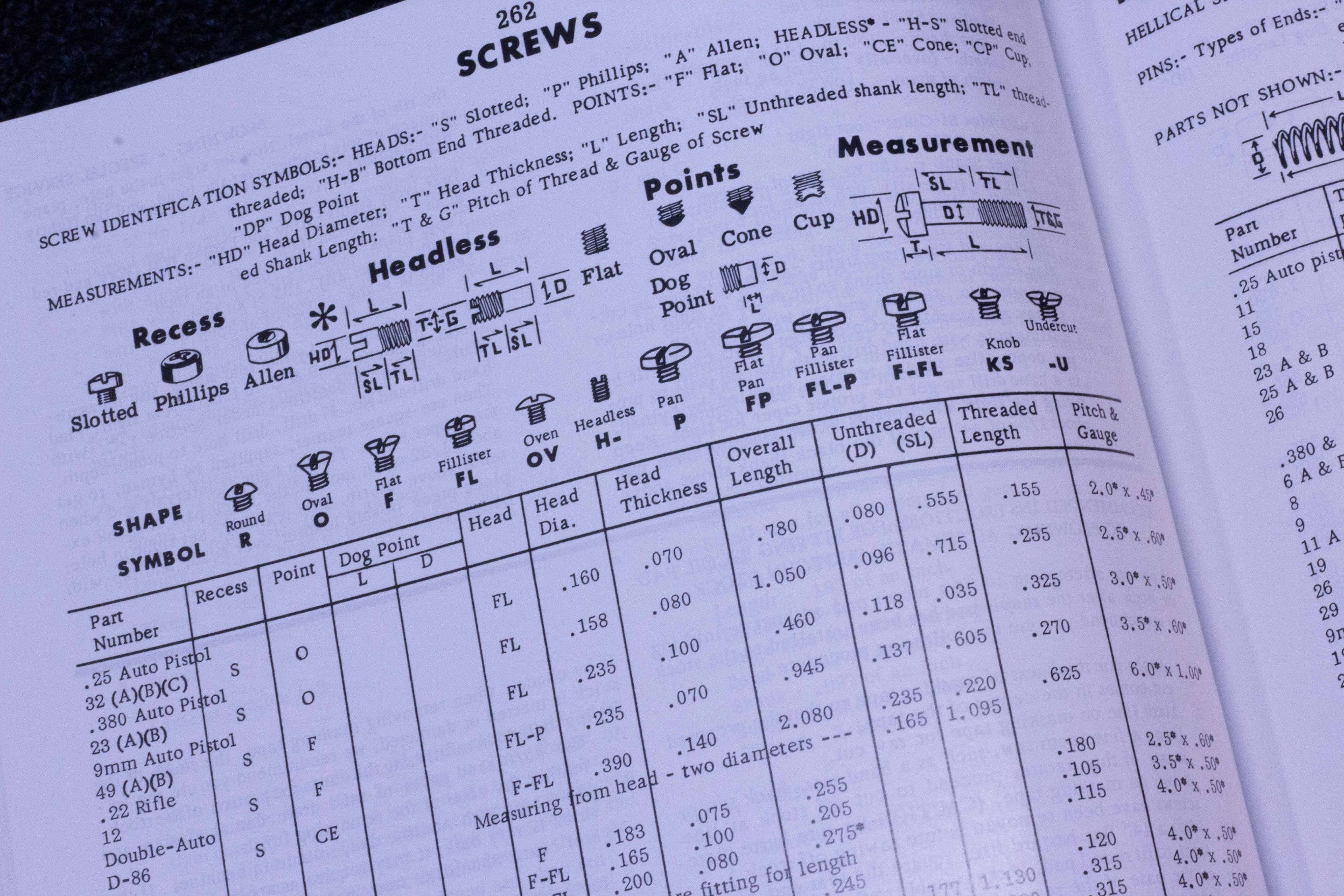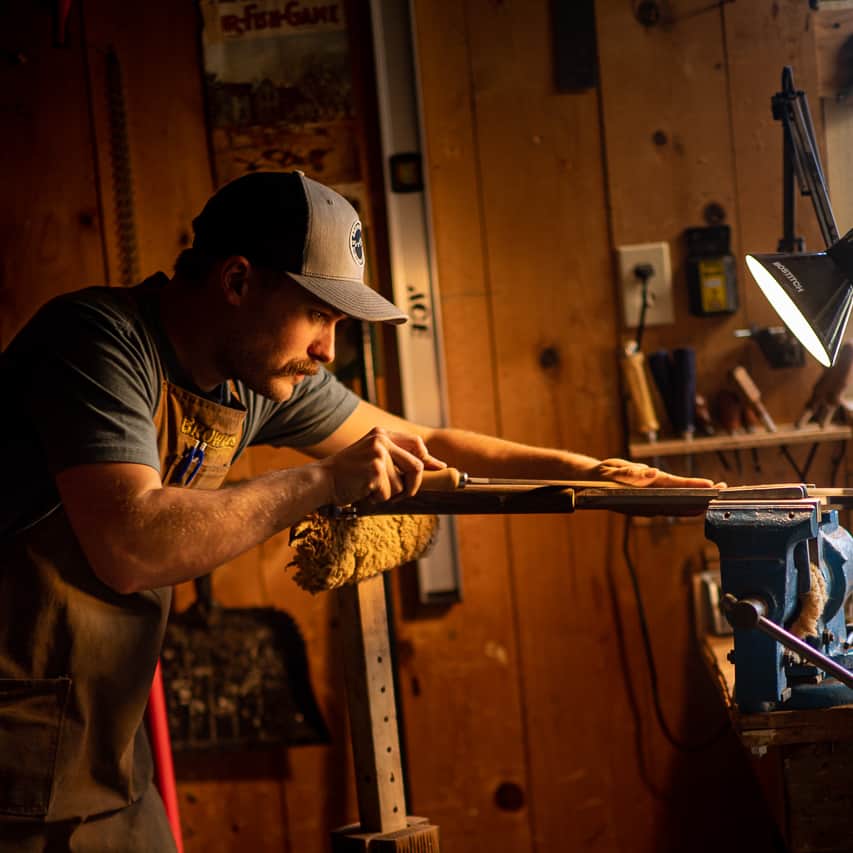
The Encyclopedia of Modern Firearms: Parts & Assembly by Bob Brownell is an invaluable resource to the gunsmith. It is full of schematics, parts diagrams, and assembly/disassembly procedures for many firearms. With over 1,000 pages and 1,600 diagrams, this book should be a reference on every gunsmith’s bench.
First published in 1959, this book is on its 34th printing. It primarily covers American-made firearms manufactured before that first printing. That makes this an excellent resource if you have older guns coming across your bench. Some of these firearms, such as the 1911 and Remington 870, are still being manufactured, and the information still applies.
Affiliate Disclosure: This article may contain affiliate links. When you use these links, I earn a small commission from each sale generated at no cost to you. This commission helps me continue to put out free content. I work a full-time job that I am very happy with; therefore, I don’t need this commission and am not obligated to speak highly of any product. Everything written is my own opinion: the good, the bad, and the ugly.

Highlights
Picture/Diagram Heavy: This Encyclopedia relies heavily on different factory schematics and diagrams. These diagrams help you on the bench in many different ways. They are instrumental when troubleshooting helping you see how the parts inside of the firearms work together. Most of these diagrams were collected from the manufacturers and are exceptionally detailed.
Detailed Disassembly: Countless disassembly and reassembly instructions are simply not available. This primarily applies to older firearms that have not been in production for many years. I’ll admit that this is not the first book that I go to for disassembly instructions, but it is where I end up when working on something old and unusual. This has been the case on many old Stevens, Winchester, and Remington pump shotguns.
Parts Charts: Throughout the book, you will find many parts charts. These range from screws and pins, to helical springs. Most of these parts are no longer made and can be near impossible to find. These charts are there specifically for the gunsmith and give you every dimension needed to make one in your shop. The picture below shows an example of one of these charts for screws.
Troubleshooting Guides: These are hidden gems within this encyclopedia. There aren’t a ton of them but the ones found are handy. Similar to the ones found in the Kuhnhausen manuals, they walk you through different problems for different models and the potential solutions.

Final Thoughts
As good as this book is, there are still some downsides. The first is that it can be hard to navigate and find the information you are looking for. One of the first pages of the book addresses this issue. They explain that with the amount of information in the book, it is nearly impossible to organize it any other way. However, they give you instructions on finding the best information you are looking for.
Use coupon code KTG10 to get 10% off your order of $150 or more at Brownells.
I genuinely believe that every gunsmith that works on classic firearms needs to have this on their bench. The information is invaluable, and the cost can quickly be made up in time saved scouring the internet looking for a hard-to-find troubleshooting manual. After familiarizing yourself with this Encyclopedia, it will quickly become one of the most valuable tools on your bench.

Written by: Kurt Martonik
Kurt is a Gunsmith, Reloader, Hunter, and Outdoorsman. He grew up in Elk County, Pennsylvania, where he became obsessed with the world of firearms. Following high school, Kurt enlisted in the United States Air Force as a Boom Operator, where he eventually rose to the position of Instructor. After his military service, he attended the Colorado School of Trades(CST) in Lakewood, CO for gunsmithing. Following graduation, he accepted a job at C. Sharps Arms in Montana, where he worked as a full time stockmaker and gunsmith.